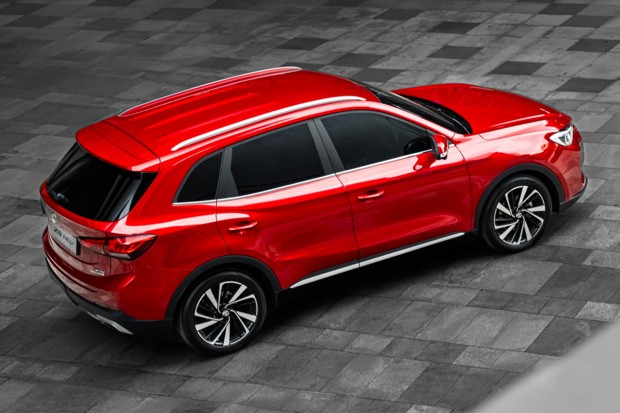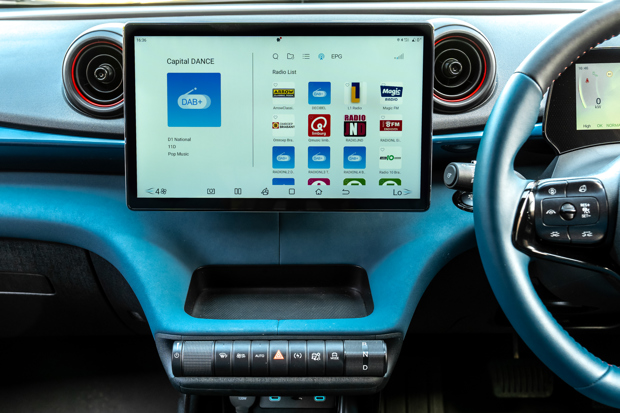Chinese Electric Vehicle - Marketshare & Statistics
The Chinese EV Revolution
It wasn’t too long ago that Chinese car brands were barely registered outside their home market. Early attempts to go global were met with skepticism , often dismissed as copycats or, at best, cheap alternatives to Western and Japanese automakers.
But fast-forward to 2025, and China is leading the electric vehicle (EV) market.
Led by brands like BYD, NIO, and XPeng, Chinese EVs have surged from relative obscurity to dominate the global stage. China is now the world's largest EV producer and exporter, with homegrown brands outselling legacy giants in key markets and forcing those brands to rethink their strategies.
But how and why has the Chinese EV revolution taken the world by storm? And with Western tariffs threatening to slow their momentum, can Chinese automakers maintain their breakneck growth?
Key Statistics
-
Global EV sales reached 17.1 million units in 2024, with China accounting for 11 million — around 65% of the total.
-
In 2024, plug-in hybrids (PHEVs) grew by 81% in China, compared to 19% growth for battery electrics (BEVs).
-
China’s EV market penetration rate reached 52.3% in November 2024, up from 36% in July 2023.
-
Automaker BYD delivered nearly 4.3 million electric vehicles in 2024, becoming China’s largest car manufacturer. Its entire passenger car fleet consists of BEVs (battery electric vehicles) and PHEVs (plug-in hybrid vehicles).
-
BYD now commands over one-third of new EV sales in China, offering more than 40 models across four EV brands.
-
Foreign brands’ market share in China dropped to 37% in 2024, down from 64% in 2020.
-
In the first half of 2025, 5.468 million EVs were sold in China, putting the market firmly on track to reach the projected 12 million sales by year end.
-
By June 2025, EVs made up over 53% of all new car sales in China, confirming that more than half the market is now electric.
-
China’s EV market is projected to reach 12 million units in 2025, surpassing traditional combustion engine vehicle sales (estimated at under 11 million) for the first time.
-
NEV penetration in China is forecast to rise from 49% in 2024 to 58% in 2025.
-
China’s EV market revenue is projected to reach US$377.9 billion in 2025.
Key Chinese EV Manufacturers
BYD (Build Your Dreams)
BYD is the world's largest NEV (new energy vehicle) manufacturer with 4.3 million sales in 2024. As of 2024, BYD's annual vehicle production capacity in China has reached 5.82 million vehicles. The company operates multiple plants across China, with its largest facility in Hefei having a capacity of 1.32 million vehicles annually.
BYD has established more than 30 industrial parks across 6 continents. It’s present in more than 70 countries.
Flagship Models:
- Han EV (business sedan)
- Qin Plus EV (urban commuter)
- Dolphin (compact)
SAIC Motor (MG)
SAIC Motor Corporation Limited is China's largest state-owned car manufacturer, headquartered in Shanghai. It ranks 93rd on the Fortune Global 500 list with revenue of $105.2 billion in 2023.
In Europe, SAIC operates primarily under the MG brand, which it acquired in 2007. During the first half of 2023, MG registered 104,300 vehicles in Europe, achieving a 128% growth compared to the previous year.
Flagship Models:
- MG4 EV (electric hatchback)
- MG3 HEV (new hybrid)
- MG Cyberster (roadster)
Li Auto
Founded in 2015, Li Auto is a relatively new player in the EV market. 2024 vehicle deliveries were expected to be in the range of 501,812-511,812, an impressive feat for such a new company.
In 2024, Li Auto targeted expansion into Middle Eastern markets including the UAE and Saudi Arabia. The company has set ambitious global sales targets - 1.6 million vehicles by 2025.
Flagship Models:
- Li L9 (premium SUV)
- Li L8 and L7 (mid-range models)

Why Are Chinese EVs Dominating?
BYD (Build Your Dreams)
Car manufacturer BYD is the world’s largest new energy vehicle (NEV) maker, selling nearly 4.3 million EVs in 2024 and becoming China’s biggest carmaker. Its passenger fleet is now fully electric, with a mix of BEVs (battery electric vehicles) and PHEVs (plug-in hybrids).
While BYD has scaled back some domestic output and trimmed its 2025 sales target to around 4.6 million units, it continues to dominate China’s EV landscape with over 40 models across multiple brands.
Outside of China the UK has become BYD’s biggest market after sales surged 880% in September 2025 compared to September 2024. The majority of sales were the plug-in hybrid version of the Seal U SUV with 11,271 sales last month.
SAIC Motor (MG)
SAIC Motor is China’s largest state-owned carmaker, headquartered in Shanghai. In 2023, it reported revenue of $105.2 b, ranking 93rd on the Fortune Global 500.
In China, SAIC delivered 2.053 million vehicles in H1 2025, up 12.4% year-on-year, with August 2025 alone seeing a 41% surge and nearly 130,000 NEVs sold. To strengthen its export reach, MG/SAIC has even commissioned one of the world’s largest car carriers, able to transport around 9,500 vehicles to Europe in a single voyage.
Li Auto
Founded in 2015, Li Auto rapidly carved out a position in China’s EV / NEV space. In 2024, it delivered between 501,812 and 511,812 vehicles, a strong showing for a relatively young automaker. The company also aimed to expand into the Middle East (UAE, Saudi Arabia) and set an ambitious global sales target of 1.6 million vehicles by 2025.
In 2025, Li Auto redoubled its international push: it launched its Li i6 battery-electric SUV in September, beginning deliveries to signal deeper entry into pure EVs.

Why Are Chinese EVs Dominating?
Policy Support
If there’s one reason China’s EV industry has left the rest of the world playing catch-up, it’s policy. While many Western governments hesitated over incentives and infrastructure, China treated electric vehicles as a strategic national priority - backing the industry with billions in funding, tax breaks, and regulations designed to accelerate adoption.
Between 2009 and 2023, China poured over $230 billion into subsidies and tax incentives, making EVs more affordable for consumers and giving manufacturers the firepower to scale up production. Buyers benefitted from direct rebates, a 10% sales tax exemption, and long-term incentives to switch from petrol to electric.
Cars are Becoming More Like Consumer Electronics
And that gives China a distinct advantage over its Western counterparts.
Building a world-class internal combustion engine is difficult — one of the reasons German carmakers built their reputation. But new energy vehicles (NEVs) have no engines, no transmissions, and far fewer moving parts. The focus has shifted from mechanical engineering to something China knows better than anyone: batteries.
Batteries are the most critical component in an EV, accounting for 30–40% of manufacturing costs. Success now depends on battery chemistry, power management, and software integration — areas where Chinese firms have a commanding lead.
The Role of Tech & AI in the EV Future
China’s automakers are no longer competing only on price, they’re racing to redefine what a car is. Increasingly, Chinese EVs are “smartphones on wheels”, packed with AI-driven features, autonomous driving software, and connected ecosystems.
This convergence of EVs and consumer electronics gives Chinese brands a distinct advantage. For younger, tech-savvy buyers, cars are becoming less about horsepower and more about digital experience, connectivity, and integration with everyday devices - areas where China’s consumer tech ecosystem already leads the world.

Cost Advantages: How China Undercuts Global Rivals
Production Efficiency
China’s raw manufacturing efficiency allows its automakers to build cars faster and cheaper than their Western rivals. Even after tariffs, the cost savings are passed on to drivers. Analysts estimate that Chinese EV makers enjoy a built-in cost advantage of around 20% compared to the US and Europe - meaning their cars can undercut Western counterparts by thousands.
Scale & Subsidies
China’s policymakers realised early on that competing directly with established ICE brands was futile. Instead, they made new energy vehicles (NEVs) a strategic priority.
Between 2009 and 2023, the government poured around $230 billion into subsidies and incentives, with annual support rising from $7.6 billion (2009–2017) to $45.2 billion in 2023. Battery giant CATL alone received $809 million in 2023, the same year it supplied 36.8% of global EV batteries - a share it has maintained at ~37% in 2025.
Supply Chain & Sustainability Challenges
For all its dominance, China’s EV industry faces challenges of its own. The country controls the majority of the world’s battery manufacturing capacity, but it still relies heavily on imports of lithium, cobalt, and nickel from regions like Africa and South America. To secure its supply, China has invested billions in overseas mining operations and long-term contracts, particularly in Chile, Indonesia, and the Democratic Republic of Congo.
Sustainability is another pressure point. While Chinese automakers are pushing battery recycling and greener manufacturing processes, the scale of production poses long-term environmental risks. How effectively China addresses these challenges will shape whether its lead is secure or fragile.

The Western Response
Fearing an onslaught of low-cost Chinese EVs, Western governments have moved to protect domestic manufacturers with sweeping trade barriers.
In Europe, new anti-subsidy tariffs took effect on 30 October 2024, hitting Chinese automakers with steep additional duties:
-
SAIC (MG): 35.3%
-
BYD: 17.0%
-
Geely: 18.8%
-
Tesla (China-made models): 7.8%
These are applied on top of the EU’s standard 10% import duty, making some Chinese EVs up to 45% more expensive for European buyers.
Global Market Impact
For the second year running, China is the world’s largest auto exporter. In 2024, it shipped 4.1 million passenger vehicles abroad — a 24% year-on-year increase — with one in four exports being a New Energy Vehicle (NEV).
United Kingdom
-
MG sold more than 68,000 vehicles in 2024, cementing its position as the UK’s fastest-growing brand.
-
Chinese-branded EVs could make up a quarter of Britain’s electric fleet by 2030, according to industry forecasts.
-
By early 2025, the number of Chinese EVs priced under £30,000 in UK showrooms had risen from 9 to 29 models, giving buyers unprecedented choice.

2025 & Beyond Outlook
The transition to electric vehicles is accelerating. In 2025, global EV sales are expected to rise by 20%, reaching 20.4 million units, up from 17 million in 2024.
In the UK, predictions suggest EVs will account for 23% of all new car sales, up from 19.6% this year.
China will remain the world’s largest EV market, not only in production but also in demand, with plug-in hybrid (PHEVs) and extended-range EVs (EREVs) gaining traction alongside fully electric models. In fact, China is poised to become the first major market where EVs outsell ICE vehicles.
Will Tariffs Slow China’s Growth?
The global trade landscape remains highly uncertain, and tariffs continue to shape where and how Chinese EVs can compete.
In the United States, the Trump administration’s 2025 tariffs, including a 25% levy on all vehicle imports and 20% on Chinese goods, have effectively shut Chinese EVs out of the market for now.
In Europe, protectionist duties remain in force, but stricter CO₂ reduction targets are squeezing traditional automakers, forcing them to accelerate their EV shift — indirectly boosting demand for Chinese brands that can supply affordable models quickly.
The Road Ahead: A Chinese-Led EV Future?
With unstoppable momentum, cutting-edge technology, and a dominant position in global EV production, China is currently the driving force behind the global EV revolution. The response from Western carmakers will determine if that remains the case in 2025 and beyond.
Sources
European Commission, Center for Strategic & International Studies (CSIS), Fleet News, Information Technology & Innovation Foundation (ITIF), Transport and Energy, Al Jazeera, CNEV Post, Tech Wire Asia, Statista, MIT Technology Review, SMMT, Auto Trader, the Telegraph, Campaign Asia, BYD, China Daily, SCMP, China Briefing, Car Expert, Nikkei Asia, Reuters, Financial Times, Bloomberg, International Energy Agency (IEA), Escalent, PwC, EV Volumes, Counterpoint Research, International Council on Clean Transportation (ICCT), Fitch Ratings, CATL, XPeng, NIO, Volkswagen, BMW, Tesla.
